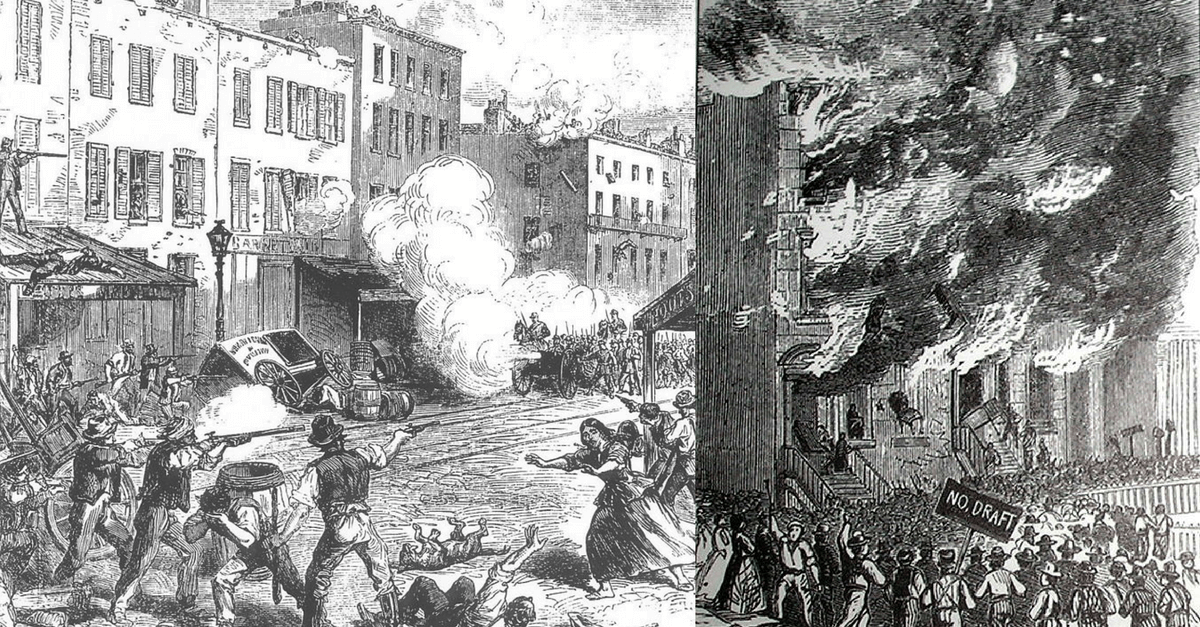Pretty much every nation has some unfortunate or downright ugly history. The American Civil War is often viewed through a somewhat black and white lens. The South wanted secession and slavery. The North wanted to preserve the Union and outlaw slavery.
The issue of slavery was not always at the forefront, although that is how many people view the conflict now. The Northerners were not all heroes against slavery who volunteered in droves for military service.
In fact, New York City had some people fervently against the draft and against abolishing slavery.
During the Civil War, one of the deadliest wars in history, the North eventually had to institute the draft. This idea was never very popular, but it was particularly unpopular in New York.
New York had several cotton processing plants that suffered severely during the war with the cotton-producing South. Laborers, primarily Irish immigrants, feared masses of freed slaves would come and steal their jobs, especially considering that a sizeable amount of blacks were working in the docks already.
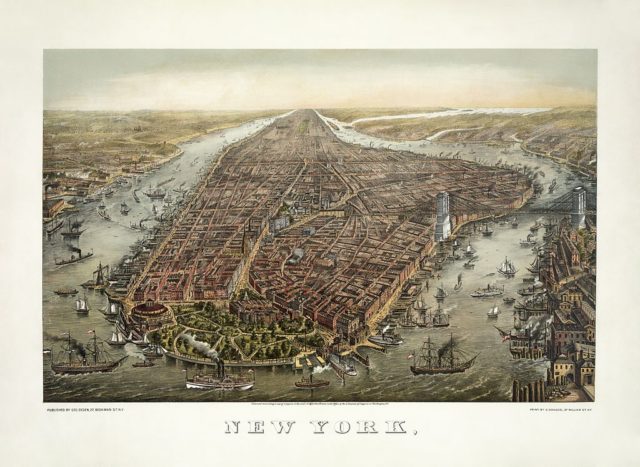
Tensions were already high, and they got worse after the first round of draft numbers. No significant public outcries happened until after the second drawing two days later, but that gave people time to build their anger.
Several members of the fire department had been drafted or had been sympathetic to the drafters. On the day of the second drawings, July 13th, 1863, open riots began, assisted by large numbers of firemen.
The rioters were angry for three main reasons. Firstly, they resented the draft and fought against it. Secondly, they believed freed slaves would take all the jobs. Lastly, there was a loophole to the draft.
If a person could pay $300 (close to $6,000 today), they could be exempt from the draft. These “$300 men” were targeted based simply on their appearance.
The rioters were primarily Irish immigrants. They set offices on fire, which burned and spread uncontrollably due to the number of firemen with the rioters.
Telegraph lines were cut to prevent word from getting to other areas of the city. They also killed dozens of horses that were carrying carts through the city.
Police officers responded with clubs and revolvers when they went to subdue the mob in a massive street fight. The rioters were well armed too, using makeshift clubs and firearms obtained from raiding armories.
The police, badly outnumbered, were beaten back to safer areas with most of them severely wounded.
The police superintendent came out to survey the riots. He was spotted by the mob and beaten until nearly dead, finally being rescued with cuts and bruises all over his body.
At some point, the rioters targeted the offices of the New York Times. They broke into the building but quickly fled as the building had multiple Gatling guns (somehow just a year after its official invention) for defense.
One of these was manned by the founder, Henry Raymond. The rioters instead focused their efforts on the New York Tribune which was defended by less rapid-fire heavy guns.
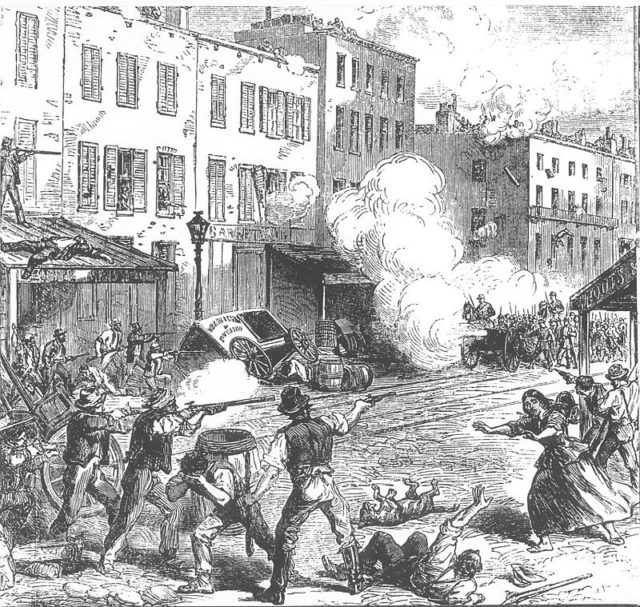
During the fighting, many of the rioters went to the Bull’s Head Hotel to get drink. The hotel refused to provide alcohol as it would fuel the violence.
Stones were pried up from the streets and used to shatter windows and break down doors. The mob then decided to burn the hotel to the ground.
The most deplorable aspect of the riots was the targeting of innocent people. Individuals who looked as if they could afford the $300 draft waiver were beaten, robbed and occasionally killed.
Homes of draft supporters were targeted and buildings burnt. As many as several dozen rioters were killed having been trapped within these buildings.
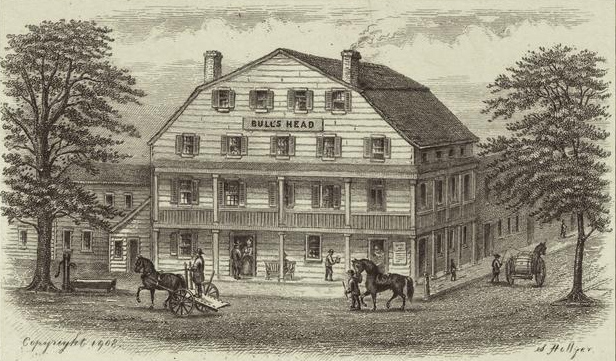
Those who received the absolute worst were the black workers. Black men were beaten and lynched, then set on fire.
There is one definite example of this, but it seems to have occurred multiple times. Other black men were beaten to death.
The Colored Orphan Asylum, a fine institution that promoted black success, was burnt down. Police had to bravely hold the rioters back so the children could escape before the building ultimately collapsed.
What may have been the first black-owned pharmacy was also targeted and destroyed.
Some landlords forced their black tenants out for fear their buildings would become a target. The scene on the docks was chaotic as this is where a majority of the race tensions existed. Over 100 blacks were killed during the initial two days of rioting.
The military response took three days to reach the city, mainly because the New York State Militia were away at war. The troops that did eventually reach New York included many men fresh from fighting in the Battle of Gettysburg.
Thousands of soldiers entered the city and most of the mobs dispersed. Some groups still fought on. There was a minor skirmish in a park killing about twelve people in the last gasp of the riots.
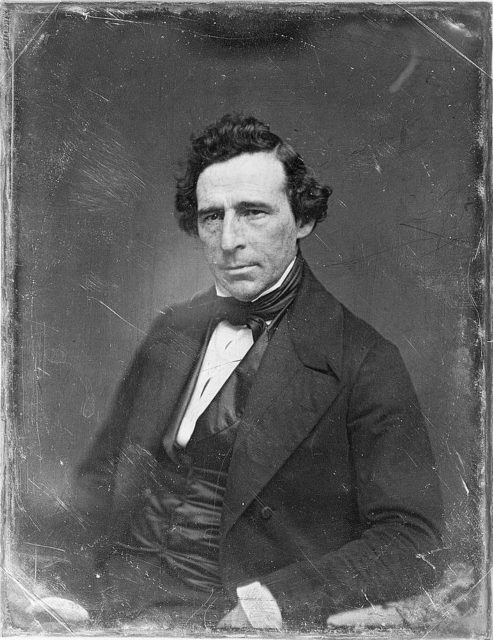
Total property damage was over twenty million dollars in today’s money, and that is a low estimate. Many blacks decided to move to Brooklyn, then a separate city and rebuilding began.
Many of the wealthy spent a great deal to rebuild the black community, providing jobs and housing. Opposition to the draft still continued, though there were no more violent incidents.
The film Gangs of New York does an excellent job, for Hollywood, in showing the riots as a side event to the other main themes of the movie.
This incident has gone down as one of the most violent racial riots in American history, and it occurred in the real streets of New York.
